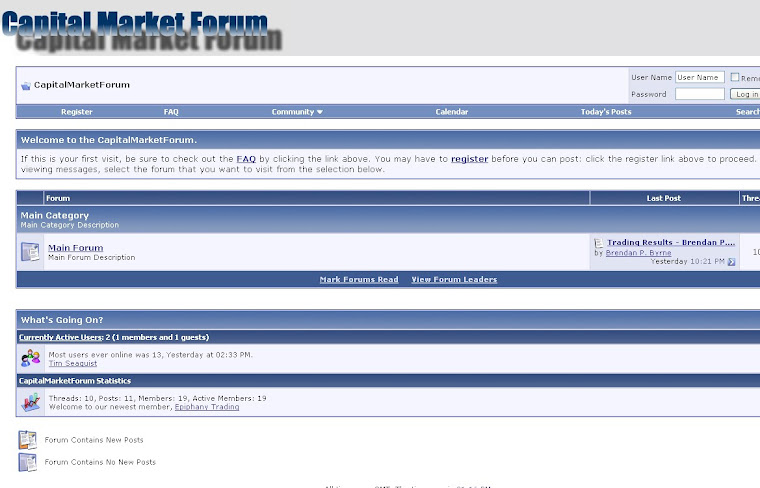Has anyone ever gone to Vegas or Atlantic City and placed a $100 bet on, say, red on the roulette wheel? Let’s say you lose. You decide to double down by betting another $100. And lose again. Now you’re down $200. You double down again. You lose again. Now you’re down $400. You double down again. Now you’re down $800. You double down again. And lose again. Now you’re down $1,600. And again. $3,200. And again. $6.400. And again. $12,800. And again. $25,600. And again. $51,200. And again. $102,400. And again. $204,800. And again. $409,600. And again. $819,200. And again. $1,638,400. That means if you’re wrong 15 times in a row, you lose $1,638,400 and have to bet that much the 16th time…just to break even. However, if you’ve been wrong 15 times in a row but simply bet $100 each time, you’re down $1,500. Little bit of a difference, huh? Now, it is admittedly highly unlikely that one can be wrong 15 times in a row at the roulette wheel, but not impossible. Furthermore, there is a much higher chance that one can have 15 losing trades in a row. So why is it that traders tend to double, triple, quadruple or more down when a position goes against them? Well, that’s a point I’ve made here countless times. More relevantly here, let’s say a trader gets flat…why then would he/she place much bigger orders than normal if that individual was already down money on the day? Simple. An innate desire to get his/her money back. But that is the exact opposite way one should play it. When losing repeatedly, psychology can become morose thus one holds a financial gun to their head by ramping up size after exiting a position when initiating a new position. Instead, what has worked for me is shrinking position size slightly when losing just to get a rhythm and then expanding sizes anew back to normal size. When winning, increase size a bit but if losing a rhythm, shrink the attempts back to normal size. But the bottom line is to maintain your normal size overall and/or not to stray too far from it at anytime. First, maintaining size enables one to keep a semblance of normalcy about them even in extraordinarily wonderful or difficult times. Second, it keeps your trading account stable in not taking on too much risk particularly on good days when one can give up all of their gains and more. And most importantly, on particularly bad days, it keeps one from blowing out their trading stake. Thus, if what you’re doing overall tends to work, by keeping your head- and trading size stable, you can keep yourself solvent always…and a winning trader overall.
Markets were very strong overnight with Hong Kong and Tokyo both up about 2%. In Europe, London and Frankfurt are both ahead 1.5% with Paris up 2.5%. The dollar is flat against the yen but weaker against the euro. Gold and oil are sharply higher. The two main key cogs are the GM buzz but also the head of the Irish Central Bank came out and accepted the fact that Irish banks will need a capital infusion. So, it now seems like whatever action may happen will now be allowed to happen. State-side, futures are sharply higher. For the day, it’ll depend on the Irish headlines and the “GM” ticker, but there will likely be a little bit of selling into the initial euphoria. Focus on the biotechs in the news once again (DNDN for instance), the auto stocks (GM, F, AXL, JCI), earnings plays, retailers, and relative weakness plays (particularly early).
Reiterating-
If the whole story is not there -
If something is good, assume either a short thru unchanged or an A-B-A2 (preferably to the downside in a downside market and the upside in an upside market) based on direction of the market unless specified.
If something is bad, assume either a buy thru unchanged or an A-B-A2 (preferably to the downside in a downside market and the upside in an upside market) based on direction of the market unless specified-
Good- The following stocks have good news and/or a strong technical pattern
DNDN- received approval from a Medicare panel
CLNE, AXL, JCI- featured on “Mad Money” last night
LTD- decent earnings and declared special $3/share dividend
DRYS- good earnings
ARUN- decent earnings
SPRD- decent earnings
CMED- closed near a high after posting great earnings
SIHI- closed near a high
TGT- closed near a high after posting great earnings
NTES- decent earnings
CDTI –closed near a high
JCG- closed near a high
BKE- decent earnings
HP- decent earnings
PLCE- decent earnings
LTXC- being bought out by BRGY for .96 shares of VRGY for each LTXC share
EXEL- positive phase II ovarian cancer XL 184 data
CSIQ- decent earnings
AUMN- initiated at Rodman and Renshaw with a 50/share price target
MBT- decent earnings
GMO- signed memo of cooperation with EXIM Bank of China
Bad-The following stocks have bad news and/or a weak technical pattern
PETM- poor earnings
HEAT- share offering
JKS- closed near a low
DQ- closed near a low after posting terrible earnings
FSLR- closed near a low
APWR- postponed earnings release
SNCR- 4.26 million share offering at 25.40
BORN- closed near a low
ASYS- closed near a low
SIRO- poor earnings
NILE- CFO resigned
WLT- in talks to buy Western Coal of Canada
HUM- warned on earnings guidance
SHLD- bad earnings
WSM- poor earnings
Earnings:
THURS NOV 18 BEFORE
AEO APWR BKE
CSIQ DLTR
GME HP PLCE
ROST SHLD SJM
SPLS WSM
THURS NOV 18 AFTER
ADSK ATW BCSI
CRM DELL FL
GPS INTU MRVL
WTSLA
Epiphany Trading, LLC
www.epiphanytrading.com
Erik R. Kolodny- Chief Markets Strategist
Brendan P. Byrne- President

No comments:
Post a Comment